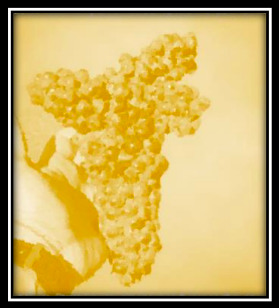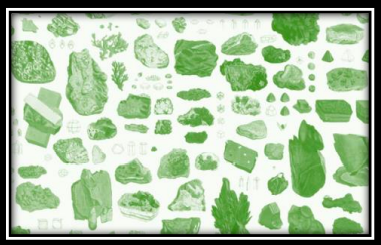REGULAR HOURS: TUESDAY-THURSDAY 12-6PM // FRIDAY & SATURDAY 12-8PM // SUNDAY 12-5PM // CLOSED MONDAYS
EXTENDED HOLIDAY HOURS: OPEN MONDAYS // THURSDAY - SUNDAY OPEN UNTIL 8p // CHRISTMAS EVE 9-2p // CLOSED CHRISTMAS

Click here for the full experience: the original pdf-formatted version of this article.
Book of Bertil 1.07

Dear Bonde aficionados, and fervent readers of my opinionated newsletters, here we are at the seventh edition of The Book of Bertil. Exactly twelve months ago Bonde's adventure began, and it will be nine months since we will be opened on July 6th; days of the opening of the first modern Olympic Games in 1896, the victory of Julius Caesar at the Battle of Thapsus, and for us, it was the first day of an extraordinary new adventure with fabulous encounters, exchanges, and extreme richness. Thank you for that.
Another belief I must warn you that this newsletter may shock, surprise, or provoke you, but above all, I hope to help you better understand how to choose your wine. But also, I hope to demystify all the false beliefs and atomistic theories that surround the overly intellectual and introspective world of wine and its pseudo-divine sources.
This analogy was developed in the 90s. The subject is interesting, and I use it daily because it allows a simplified understanding of the (tactile) volume of the wine in your mouth.
Book One: False Claims "The Body of Wine"

A simple approach to the theory of relativity between the body of wine and that of the milk of a cow.
It is based on the gradual comparison of the effects of fat (volume-viscosity). A wine called light body will be compared to skim milk (fat-free), then in a crescendo progression; 1% (light to medium), 2% (medium to full), 3.25% whole milk (full) and light cream 18% to 30% (XXL body AKA Parker syndrome).
The problem with this simplified and incomplete approach is that it does not consider the sensory perception factors related to volume. Its sensations are called somesthetic and exteroceptive. Because they are the tactile receptors that collect the (plural) physical and chemical information that informs us about texture sensations such as: spicy, cut, astringent, bitter, alkaline etc. Wine is a complex product and can only be classified and grouped into sensations of fat volume. This would amount to defining a liquid only by its so-called proprioceptive sensations (volume and shape).

Another approach to defining the body of wine in density is the alcohol theory. It consists in defining the body of the wine by its alcohol content. This approach is based on the viscosity of the alcohol in the wine. It therefore claims that a wine has low alcohol by volume will be of a lighter body (12.5% and lower), then medium body of 12.5% to 13.5%, and full body 13.4% and more. This takes into consideration (which has never explained) that for physiological reasons (balance) a wine with a high alcohol content must automatically have a higher residual sugar level in order to restore the balance between the main elements: alcohol, sugar, tannins, acidity. This theory is therefore based on the density of glycol in your glass (fat legs VS thin and runny). The problem is that this statement is far too generic. To make it simple and short, let's take just the example of ice-wine (full body): 11% alcohol for sometimes 240 grams of sugar per volume (liter) or wines from so-called natural practices such as: "La Garagista, Damejeanne Marquette 2020, Vermont, USA" has 12.5% but a volume so powerful (XXL full body) that the theory of Alcoholometry does not stand up, and I'm already starting to stagger. So to summarize, take your favorite vodka (no flavor), 37.5% alcohol by volume with a body (viscosity) non-existent - this is to fall to the ground!
Finally, the last approach is that of grape varieties. In a short explanation, and alas, this is the most common way consumers define their favorite volumetrics.

Claims that Cabernet Sauvignon or Chardonnay will be referred to as a "full body" wine and a Pinot Noir or Pinot Gris (Pinot grigio) will be referred to as a so-called "light body" wine. This way of classifying grape varieties refers more to the aromatic density than to the body volume of the wine, and its variants. This depends entirely on the geographical origin of the wine and the winemaking practices used, a Cabernet Sauvignon can be vinified in very low extraction and will produce a wine light to medium-bodied wine and conversely on hot climates and a long extraction this will produce Cabernet Sauvignon of very high power of mouth "XXL full body". I could go on with more examples of grape varieties for the next four pages, but I'm afraid I'll get you drunk and bored.
So, let's move on to my theory, the one I would like you to apply unconditionally to choose your wines without an "if.”
But then where is the solution?
Book Two: Earth, Mother of All Nature
The vine – a living and expressive being of its origin
The vine is a plant of the liana family, and like most plants, it is hydrated by direct rainwater and that coming from the underground on which it grows. The water carries trace elements essential to the development of the plant and offers protection against the external elements, and thus allow a growth as healthy as possible. (This is the basis of the approach to biodynamic practices in the vineyard). The main elements are as follows: Boron, Copper, Iron, Manganese, Molybdenum and Zinc. But even more important are the microelements that the vine uses in greater quantities and that are transported from the soil to the plants thanks to moisture and underground decomposition. In this case water is the essential micro- conductor for its transfer to the roots of the vine. These micro-elements are the following: Nitrogen, Phosphorus, Potassium, Calcium and Magnesium. Their impacts on the vine depend on their presence and the amount possibly absorbable by the plant.
The soil - the missing link to understand the common links of the body of the wine and its spirit
Modern geology (soil science) has made it possible to understand and classify the different compositions (complex and diverse) of the soils and subsoils of the continents of our planet.
If the story told by these soils informs us about the evolution and the various climatic changes in the history of the planet, it has also allowed us to make common links between the wines originating from the same chemical compositions of soil and subsoil* and this may be defined by the region, the country, or the continent.
*Subsoil refers to the mother rock in place unaltered.
The soil is the part of the earth located between the bedrock that forms the subsoil and the atmosphere, also called soil cover, it covers the subsoil, it is exploited by the roots of plants and therefore by the vine.

Minerals - support and essential conductor
Minerals in soil are the dominant material in soil by both mass and volume. They come either from the rocks in which the soil has developed (feldspars, micas, quartz) or from the transformation of pre-existing minerals, or from the neoformation of new minerals (oxides, clays). Their physic- chemical properties regulate various physical and chemical mechanisms in soils. Thus, soil minerals and their organization in space are responsible for water reserves and contribute to the supply of nutrients for plants.

It is therefore the primary (organoleptic) expression of the wines that is the common link to the different bodies of the
wines.
To facilitate understanding, I have simplified as much as possible the 5 types of soil and their common links. The age of the vine and the different strata where the nourishing roots are located (depth) impact the organoleptic aspect of the grape over time.
Example: On the same plot composed on the surface (less than three feet from the surface) of shale (a layer of clay-like, fine grained sedimentary rock) and in depth (more than 3 feet) of volcanic soil (tufa), the young vines will produce fine wines with structure, rich, full body, and fruit forward character. As for the older vines they will give burly wines, bright, aromatic, fresh with nice acidity. (A good composition of soil drainage is essential for the vine to develop in depth.)
Book Three: Remember That You Were Born From Dust and Will Become Dust Again
Small lexicon of soil composition
Sand and sandstone soil:
Sandstone is a combination of silica and sand compacted together by pressure and time.
Volcanic soil:
Tufa is a mix of silica, calcium carbonate and sometimes
volcanic ash that has been deposited over time by streams, lakes, or other water sources.
Jory is a volcanic soil composed mostly of basalt, which is in turn a hard and dense soil that often as glassy appearance.
Limestone, calcareous and quartz soil:
Calcareous is a soil primarily composed of calcium carbonate and high in chalk or limestone as well as fossilized shells.
Alluvial is a combination of clay, silt, sand, and gravel that forms over time from mineral deposits left by running water.
Limestone or chalk are a soft soil made primarily from fossilized seashells.
Rocks, pebble, granite:
Granite is a hard and granular rock with a high content of crystals, particularly quartz.
Schist is a metamorphic rock derived mostly from clay, but it can be made from several other rocks. Shits is a soft rock that flakes and break easily.
Clay Soil:
Loam is a crumbly mixture of clay, sand, and silt.
Marl is a crumbly mixture of different clays as well as calcium and magnesium carbonates with fossilized shells mixed in as well.
Shale is layers of clay-like, fine-grained sedimentary rock. On the surface where the shale breaks it often forms beds of sharp fragments.

Book Four: Tell Me What You Drink, and I Will Tell You What You Are
Organoleptic consequences of different soils (where the vine is in time and underground space at harvest time). **

Light Body: sand and sandstone soil
Rather fine and light wines soaring aromatics
Light to Medium Body: rocks, pebbly soil, granite
Aromatics, moderate in vigor
Medium Body: volcanic soil
Powerful and corpulent wines, bright with nice acidity
Medium to Full Body: limestone, calcareous and quartz soil
Fleshy and elegant wines, with subtleness and minerality
Full body: Clay Soil
Voluminous and corpulent wines, fruit forward
**Attention: this approach only concerns the body of the wine and does not take into consideration the aromatics of the grape varieties, nor the human intervention on the vine and the cellar.
Mr. B
REGULAR HOURS: TUESDAY-THURSDAY 12-6PM // FRIDAY & SATURDAY 12-8PM // SUNDAY 12-5PM // CLOSED MONDAYS
EXTENDED HOLIDAY HOURS: OPEN MONDAYS // THURSDAY - SUNDAY OPEN UNTIL 8p // CHRISTMAS EVE 9-2p // CLOSED CHRISTMAS
